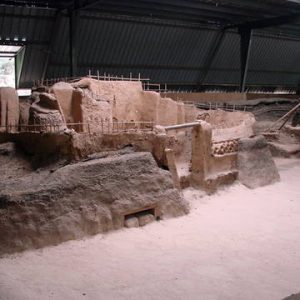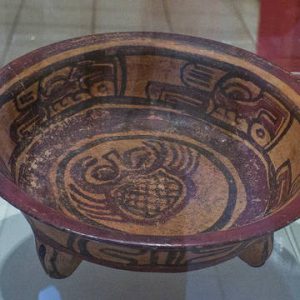The communication of ideas and beliefs has been a constant throughout the history of humankind. Archaeology shows us that in the overlapping of the material cultures of humans in the ancient and recent past. In most cases these exchanges between people provided new perspectives and insights that have allowed for growth and new discoveries. However even though humanity has been communicating with each other for as long as anyone can remember, people can still have a hard time getting the message.

Metal Detectorists discover hundreds of thousands of artifacts every year
Archaeological results are often one of the many causalities, often not published well enough or made available to others who wish to read it, be it other archaeologists or the general public. This was a source of great frustration for Archaeologists concerning metal detectorists in England during the 1990’s. A survey conducted in 1995 among the populace indicated that even though a large number of artifacts were being uncovered each year, only a small fraction of these finds were actually being reported to Museums. There was also the unsettling problem of small groups of people using metal detectors to loot sites that had been scheduled for professional excavation. This led to the passage of the Treasure Act in 1996 which set down new guidelines for what “finders of objects legally defined as treasure” were required to do with those objects.

Ancient coins are one of the most frequently found items when using metal detectors
Not a year later the Portable Antiquities Scheme was created, an initiative designed to help coordinate between amateur ‘finders’ and local Museums. The program was originally piloted at only six locations through England and had minimal funding. Each program was assigned a Finds Liaison Officer (FLO) who acted as a point of contact for these ‘finders’. Metal detectorists could take their finds to the Liaison Officers; who would then record the object’s discovery, provide relevant information and history on the object and if not deemed a ‘Treasure’ would return this item to its finder. FLO’s also served as educators to the finders as far as legislation regarding the search and discovery of artifacts to local archaeological issues. These points of contact allowed for a channel of communication between the public and Archaeological community that gained further momentum with the establishment of a public online database in 1999. This database designed as a place for people to document their discoveries as well as look for relevant information on potential artifacts. The scope of accessibility was widened significantly and it drastically increased the amount of information Archaeologists had on the distribution of artifacts in England.
While a number of Archaeologists have raised concerns over site integrity and future vandalism, this kind of connection between the academic community and the public is imperative for developing continued interest in Archaeology. The communication of ideas and knowledge must happen at every possible level, if only a select group of people are made aware of the impact of the past upon the present then anything we might gain from studying it will mean nothing.
Sources
Hunt, Alex. “BBC – History – Ancient History in depth: Archaeology and Metal Detecting.” BBC News. BBC, 17 Feb. 2011. Web. 02 Apr. 2017.
http://www.bbc.co.uk/history/ancient/archaeology/metal_detect_01.shtml
“History.” British Museum. Trustees of the British Museum, n.d. Web. 02 Apr. 2017.
http://www.britishmuseum.org/about_us/departments/portable_antiquities_treasure/history.aspx
Images
http://www.bbc.co.uk/staticarchive/dcfed8a7d9c4eb011aed58bcc2e97a57163ffa31.jpg
http://www.bbc.co.uk/staticarchive/2b995a487cc90dd30ea997a51553174a456aec02.jpg
Further Reading
https://finds.org.uk/publications/reports/treasure/1998-1999
http://www.dw.com/en/uk-treasure-hunters-make-archeologists-see-red/a-17066960


